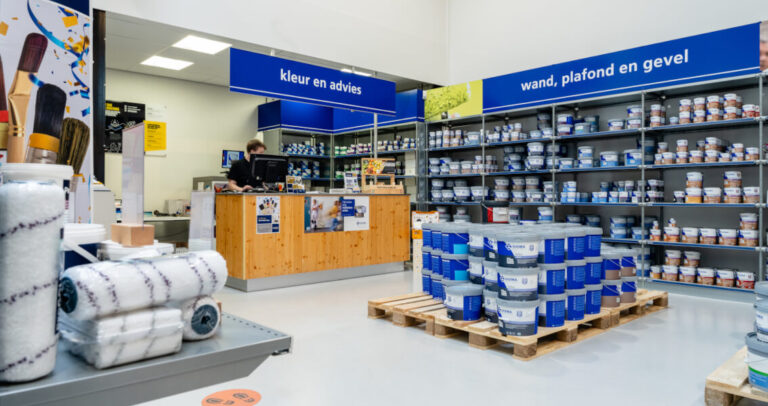October 20th, 2023
The Inventory Management Summit is globally hosted by Slimstock teams in the Netherlands, UK, Spain, Chile, and Australia. It offers a chance for supply chain and inventory professionals to connect, and inspire each other to explore solutions to deal with the growing impact of supply chain challenges.
Our 1st Canadian edition of the Inventory Management Summit was hosted at the Glenerin Inn & Spa in Mississauga on September 20th in collaboration with SCMAO (Supply Chain Management Association of Ontario).
Slimstock is a firm believer in knowledge-sharing and fostering communication among supply chain professionals. We also organized a knowledge and networking session in Quebec a week ago:
Success in the Era of Industry 4.0 aka Réussir dans l’ère de l’Industrie 4.0. Find out more about our event in Quebec here.
Here are the key takeaways from the 2023 Summit.
Addressing the Elephant in the Room: Rising Interest Rates
Rising interest rates have been a hot topic of conversation at many backyard BBQs.
What’s more, the macroeconomic effects of interest on consumer spending, mortgage rates, housing, and labor markets are regularly covered by local and national media. The impact on individual organizations, however, remains a topic rarely discussed — until our Inventory Management Summit.
The day started with a keynote by Claire Fan, economist and thought leader at RBC, who discussed some of the observed economic impacts.
Key takeaways for the business community included:
- Higher interest rates are here to stay.
- Consumers will re-evaluate their debt and spending as a result.
- For businesses, this can mean higher mortgage rates.
- It can also mean a higher cost of carrying inventory.
For many attendees, these takeaways reflected their real-life business challenges. With this framework in mind, the remainder of the day’s sessions focused on achieving better inventory management without affecting service levels or incurring additional spending.
Smashing Silos: The Need for Departmental Collaboration
Next up was a panel driven by sales, finance, and operations leaders.
While all 3 departments are involved in inventory management, collaboration is rare. Known as sales and operations planning (S&OP), this collaboration is critical to business success.
The panel, moderated by Slimstock’s Danny Bloem, focused on ways to facilitate connection and collaboration across these interdependent but often isolated departments.
First up was Munawar Quraishi, president at Safety Express. He argued that any business run by only sales would be broke, any business only run by finance would be broke and any business run only by operations would be broke. Why? Because departments need each other to be successful. From a sales perspective, inventory is the main opportunity for closing sales, and therefore no business can do without.
Next was Michelle Soans, VP of Finance at Woodbine Entertainment, who talked about the risks of carrying inventory. From a finance perspective, inventory can be a strong liability that may include a high risk of obsolescence or depreciation, along with cash-flow considerations. She argued that in times of high cost of capital, inventory should be carefully scrutinized. While no business can operate without inventory, budgets need to stay grounded in reality — not just opportunity.
Finally, executive supply chain consultant Jason Rude discussed how operations would always need to balance shipping and storage considerations and be aware of physical constraints such as warehouse capacity. He also highlighted the role of sales for inventory planning but noted that sales department forecasts shouldn’t be the primary driver of inventory purchasing, as research shows that many sales goals are never met and may be intentionally stretched too high.
The key takeaway from this speakers’ panel? To succeed, departments must collaborate, and make each other aware of the constraints they’re facing.
Weathering the Storm: The Cost of Inaccurate Forecasts
Jonathon Karelse, thought leader in the S&OP space and author of the book “Histories of the Future”, kicked things off with an engaging session about the cost of being wrong in forecasting.
He started with the key reason for forecasting: Lead times are longer than our customer’s expectations. Next, he highlighted that forecasting is not a goal in itself, and the cost of improving accuracy should be carefully weighed against the cost of being wrong. This is an important trade-off that in a time of scarce resources will become even more important.
Data-Driven Metrics: Measuring the Impact
In the second speaking session of the day, Heather Fitz-Gerald, VP at Thinkmax talked about the opportunities and challenges of Data Driven Supply Chain Management.
As noted by Fitz-Gerald, the way companies capture data can impact important supply chain metrics. Supply chains cannot succeed without properly defined metrics, and the interpretation of metrics is often different across departments. She suggested first defining the metric, then defining the data source, and building a data governance model around that. Only with proper metrics can we measure the impact of our supply chains.
Sharing the Recipe for Supply Chain Success: Story of Endy
In the last session of the day, one of Slimstock’s customers took the stage.
Aditi Murthy of Endy showcased a brilliantly simple supply chain, with their supply chain team’s motto being: Simple Strategy, Simple Execution. She talked about how their concept of product design (putting a compressed mattress in a box) helps them keep a lower warehouse footprint, reduce the chance of damage, and allow them to ship via more carriers. A unique value proposition among the often-sluggish furniture supply chains.
By following a traditional product matrix (using the price of the product vs. the cubic volume of the product) they operate against two sets of supply chain targets: Focus on local and fast manufacturing for the large and expensive items, and focus on economies of scale for anything small and cheap. This distinction helps them to execute differently while keeping a delicate balance between the storage of inventory and shipping costs.
All in all, the day was a massive success, with ample opportunities for networking, questions, discussions, and meeting like-minded peers. Next year the IMS will be back, looking to become the premier event for supply chain planning managers in Canada.









